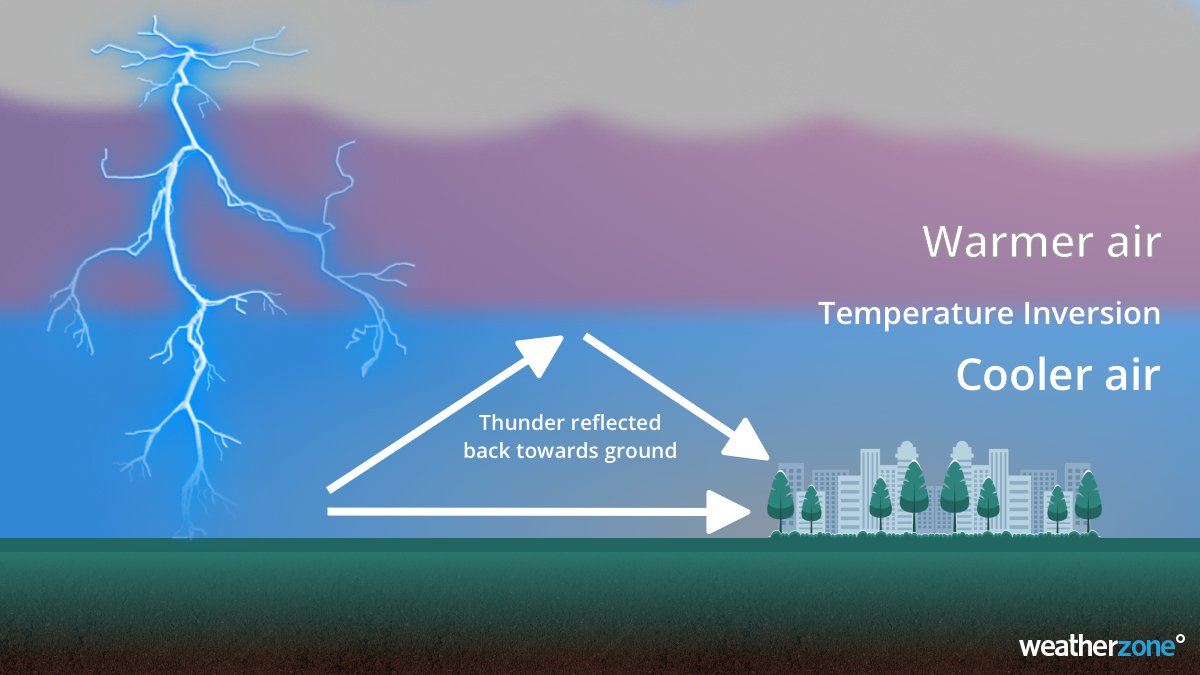Rare inversion thunder heard in Sydney
An “absolutely enormous” clap of thunder caught residents in Sydney’s Northern Beaches by surprise on Monday night as a lone cloud-to-ground lightning strike produced rare inversion thunder.
All lightning causes thunder when the incredibly high temperature of the lightning bolt causes the surrounding air to rapidly compress, creating a shockwave that propagates outwards in all directions.
If the lightning that produced the thunder is a long way from your ears, the sound it produces has plenty of time and space to spread out and bounce off objects in the sky and on the ground. This makes distance lightning sound like a long, low rumble by the time it reaches your ears.
On the other hand, when lightning occurs close by, the sound reaches you quickly without dissipating, which often makes it sound like a louder crack or clap.
However, there is an even louder type of thunder that can only occur under the right conditions. It’s called ‘inversion lightning’ and it happens when a lightning strike hits the ground beneath a temperature inversion.
A temperature inversion occurs when cold and dense air sits below a layer of warmer air in the lowest layer of the atmosphere. These temperature inversions can trap air and sound near the ground, preventing them from dissipating upwards through the atmosphere.
When lightning occurs beneath an inversion, the thunder it produces can bounce off the temperature inversion and the sound propagates horizontally. Inversion thunder can be much louder and travel longer horizontal distances than regular thunder. It is also more common and night and during winter, because this is the most likely time for inversions to form.

On Monday night, a temperature inversion above eastern NSW caused inversion thunder that could be heard loudly across parts of Sydney’s Northern Beaches, with residents in the area describing the thunder as “a single absolutely enormous lightning bolt”.
Weatherzone’s Total Lightning Network detected a single cloud-to-ground lightning strike between Forestville and Lindfield at 8:30pm AEST on Monday, June 12. This is likely the strike that caused the inversion thunder.

Image: Observed lightning and rainfall at 8:30pm AEST on Monday, June 12, 2023.